Acne is often thought of as a teenage problem, but many adults continue to struggle with breakouts well into their 20s, 30s, 40s, and even 50s.
Adult acne can be frustrating, persistent, and difficult to treat, as it often differs from adolescent acne in both cause and treatment.
If you’re dealing with stubborn breakouts, understanding the underlying factors and the most effective treatments can help you achieve clearer skin.
What Causes Adult Acne?
Unlike teenage acne, which is often triggered by excess oil production and clogged pores due to puberty, adult acne is influenced by multiple factors. Here are the most common causes:
Book Your Skin Consultation with Dr. Harmandeep Sidhu
Trusted dermatologist in Chandigarh. Get expert care in skin, hair and lasers at Athena Skin Clinic.

1. Hormonal Fluctuations
Hormonal imbalances are one of the leading causes of adult acne, especially in women. Fluctuations in androgens (male hormones like testosterone) can lead to:
- Increased oil (sebum) production
- Clogged pores
- Inflammatory breakouts
Common triggers of hormonal acne:
- Menstrual cycles (acne flare-ups before periods)
- Pregnancy
- Polycystic Ovary Syndrome (PCOS)
- Perimenopause and menopause
- Birth control pills (starting or stopping)
Hormonal acne often appears around the chin, jawline, and lower cheeks, forming deep, painful cysts.
2. Stress and Cortisol Spikes
When you’re stressed, your body releases cortisol, a stress hormone that can stimulate oil glands and cause breakouts. Chronic stress leads to persistent acne and skin inflammation.
Solution:
Stress management through meditation, exercise, and proper sleep can help balance hormones and reduce acne.
3. Poor Diet and Gut Health
What you eat plays a role in your skin’s health. Certain foods can trigger inflammation and excess oil production, leading to breakouts.
Foods That Can Worsen Acne:
Dairy products (milk, cheese, ice cream) – May increase insulin levels and trigger hormonal imbalance.
High-glycemic foods (white bread, pasta, sweets) – Cause blood sugar spikes, increasing sebum production.
Processed foods & fast food – Contain high levels of unhealthy fats and preservatives that can trigger inflammation.
Skin-Friendly Foods:
- Omega-3-rich foods (salmon, flaxseeds, walnuts) – Reduce inflammation.
- Probiotic foods (yogurt, kefir, kimchi) – Improve gut health, which is linked to clearer skin.
- Antioxidant-rich foods (berries, green leafy vegetables) – Help fight oxidative stress.
4. Using the Wrong Skincare Products
Using harsh, pore-clogging, or overly drying products can make acne worse. Common culprits include:
- Heavy, oil-based moisturizers that clog pores
- Harsh scrubs and alcohol-based toners that strip the skin
- Makeup with comedogenic ingredients (like coconut oil)
Solution:
- Use non-comedogenic, oil-free skincare products.
- Avoid over-washing—washing too often can strip natural oils, leading to more breakouts.
5. Not Removing Makeup Properly
Leaving makeup on overnight or not cleansing thoroughly can lead to clogged pores and breakouts.
Solution:
Double cleanse at night – first with a micellar water or oil-based cleanser, followed by a gentle water-based cleanser.
6. Medications & Underlying Conditions
Some medications, including steroids, birth control changes, and antidepressants, can cause acne as a side effect.
Additionally, medical conditions like PCOS, insulin resistance, or thyroid disorders can lead to persistent acne.
Solution:
- If you suspect your acne is medication-related, talk to your doctor about alternatives.
- Consider blood tests to check for hormonal imbalances.
How to Treat Adult Acne Effectively
Now that we understand the causes, let’s look at the best ways to treat and prevent adult acne.
1. Medical Treatments & Prescription Options
Topical Retinoids (Tretinoin, Adapalene, Retinol)
- Unclogs pores, reduces inflammation, and speeds up cell turnover.
- Can be drying at first—start slowly and use a moisturizer.
Benzoyl Peroxide
- Kills acne-causing bacteria and reduces inflammation.
- Works well for mild to moderate acne.
Salicylic Acid (BHA Exfoliant)
- Helps unclog pores and removes dead skin cells.
- Ideal for blackheads and whiteheads.
Hormonal Treatments (For Women Only)
- Birth control pills: Help regulate hormones that trigger acne.
- Spironolactone: A medication that blocks androgens to reduce hormonal acne.
Antibiotics (For Severe Acne)
- Doxycycline or minocycline can help reduce inflammation and bacteria.
2. Lifestyle and Home Remedies
Maintain a Consistent Skincare Routine
Morning Routine:
- Gentle cleanser (avoid harsh scrubs)
- Vitamin C serum (fights inflammation)
- Lightweight, oil-free moisturizer
- Sunscreen (SPF 30+ is a must!)
Night Routine:
- Double cleanse if wearing makeup
- Salicylic acid or benzoyl peroxide treatment
- Retinol (3x per week to start, then increase use gradually)
- Hydrating moisturizer
3. Professional Treatments for Stubborn Acne
Chemical Peels (Salicylic Acid, Glycolic Acid)
- Exfoliates dead skin and unclogs pores.
Laser Treatments (Fraxel, IPL, Nd:YAG)
- Reduces acne scars and improves skin texture.
LED Light Therapy
- Blue light kills acne bacteria, while red light reduces inflammation.
4. Acne Scar Treatments
Once acne clears, scars and hyperpigmentation may remain. Treatments include:
✔ Microneedling – Stimulates collagen to fade scars.
✔ Fractional Laser Treatments – Targets deep scars.
✔ Chemical Peels – Helps with post-acne marks.
Final Thoughts: How to Prevent Future Breakouts
- Stay consistent with skincare. Acne treatment takes at least 6-8 weeks to show results.
- Manage stress with meditation, exercise, and proper sleep.
- Eat a skin-friendly diet (limit dairy, sugar, and processed foods).
- Avoid touching your face—bacteria from your hands can trigger breakouts.
- Change pillowcases weekly to prevent dirt and oil buildup.
When to See a Dermatologist?
If your acne is severe, painful, or leaving scars, consult a dermatologist for a customized treatment plan.
